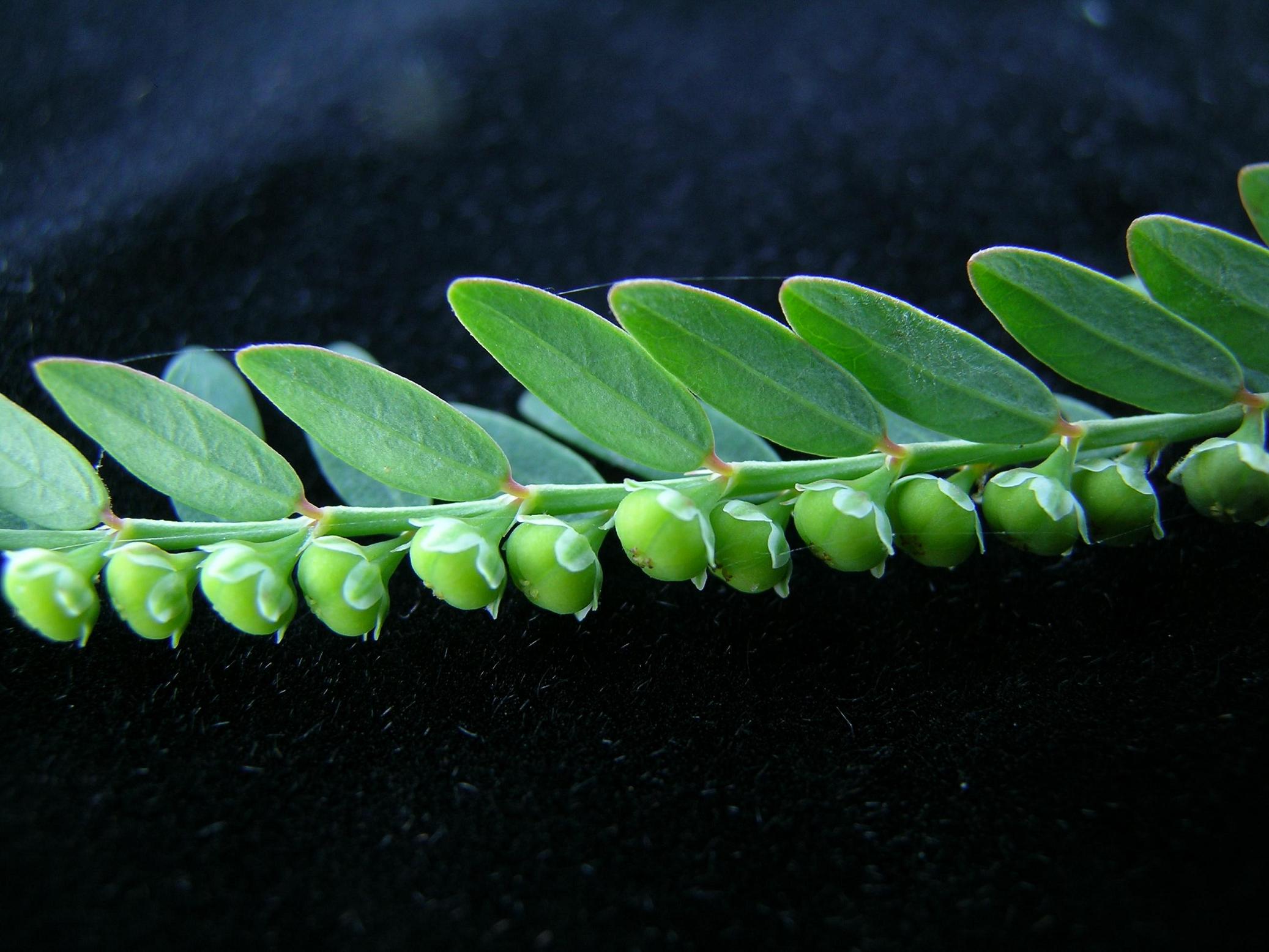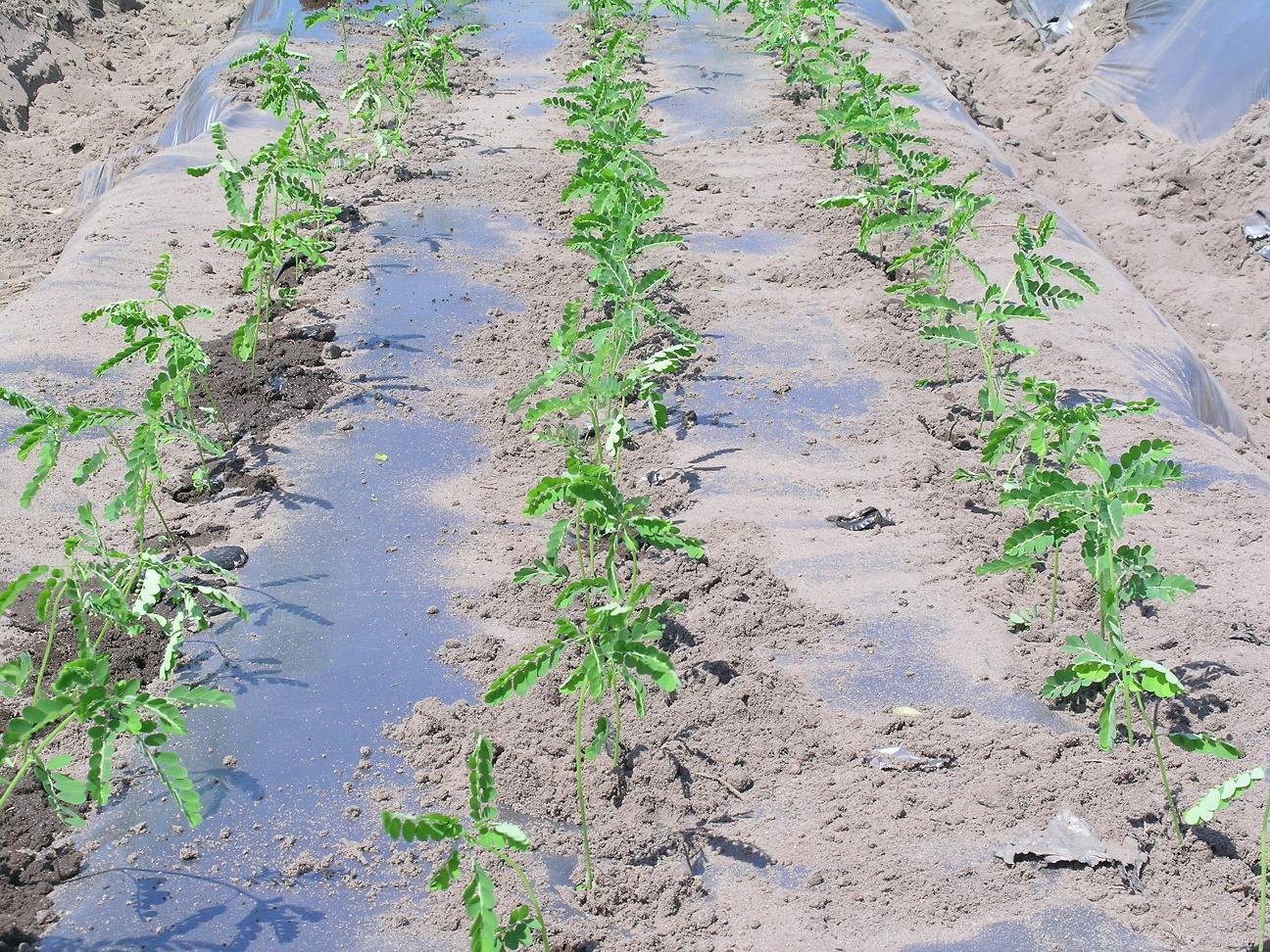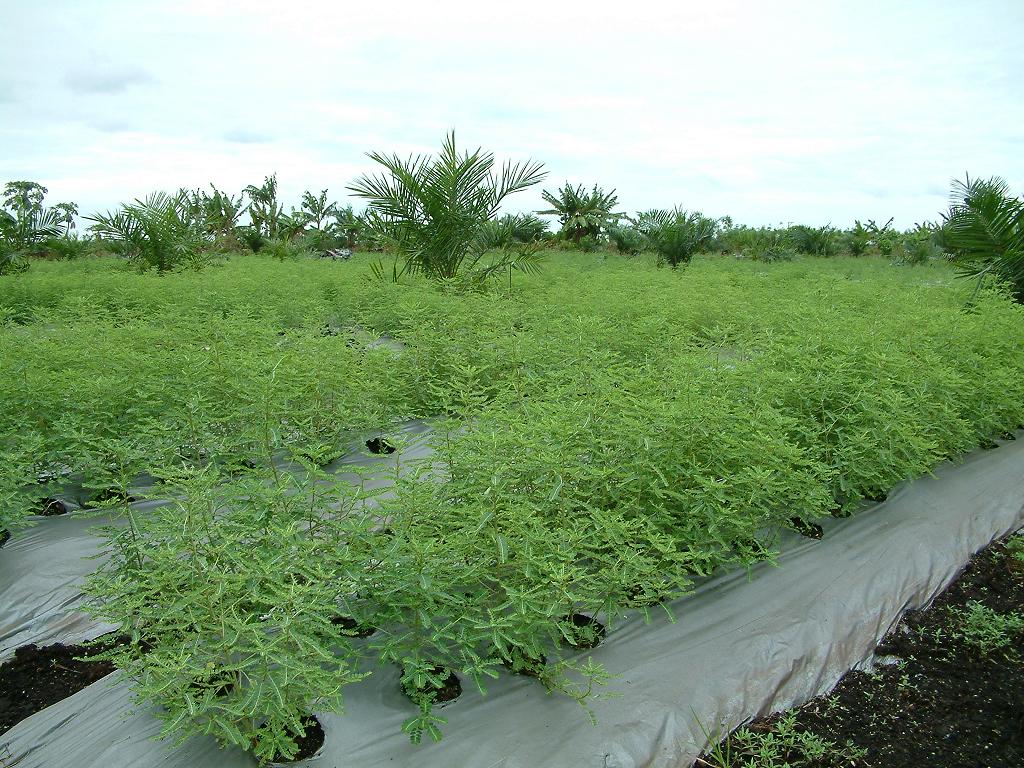Botanical Names
Phyllanthus amarus, P. urinaria, P. debelis
Common Names
| Malaysia | Dukung anak, buah amin, nipon-nipon dukung-dukung anak, rami buah. |
| English | Stone breaker, shatter stone. |
| Indonesia | Meniran, memeniran. |
| China | Zhen chu cao, ye xia zhu. |
| South America | Quebra pedra. |
Family
Euphorbiaceae

Introduction
Phyllanthus amarus or locally called ‘dukung anak’ is a small herb that can grow in areas with different habitats. This plant is abundantly found in dry as well as wet areas in gardens and wasteland. Although regarded as weed by farmers, the plant has medicinal properties and highly regarded by traditional herbal practitioners.[1]
Morphological Features
The plant can grow to a height of 50-70 cm. The stem is green or red depending on the species. The leaves are green, very small (2-3 mm long) and oval-shaped. The yellow flowers are tiny and at the leaf axils. The fruits are at the bottom of each leaf petiole. In Malaysia, generally there are three species of ‘dukung anak’: Phyllanthus amarus, P. urinaria and P. debelis. Traditionally, all the three species are used in traditional medicines.[1][2]

Medicinal Properties and Usage
Traditionally this plant is widely used in the Ayurveda and Greek healing systems as well as in the Chinese and South American traditional medicines. It is used to treat diseases such as kidney stone, malaria, asthma, liver-related diseases, as a diuretic and to increase appetite. In Malaysia, this herb is mainly used to treat diabetes, hypertension, diarrhea, itchiness, jaundice and as an antidote for poisonous insect bites.[1][2][3][4][5]
Field Preparation
Soil Suitability and Climatic Requirement
‘Dukung anak’ can be cultivated on most soil types including sandy soil such as bris soil, tin tailings, mineral soil, alluvium and peat. However, the plant needs sufficient water and ample sunlight to grow well. The optimum monthly rainfall required is about 180 mm during the crop growing season. The required soil pH is between 5.5 to 6.0.[1][2]
Land Preparation
‘Dukung anak’ is sensitive to water-logging and thus it is best to plant the herb on beds. The recommended bed size is 120 cm wide (furrow to furrow). The height of the bed depends on the drainage system in the area. For bris soil, the height of the bed is recommended to be 25–30 cm. For peat soil or other soils with high water tables, higher beds are necessary to avoid flash floods. Apart from that, a good drainage system is crucial to avoid waterlogged conditions.[1][2]
Production of Planting Materials
‘Dukung anak’ is usually propagated by seeds since seeds are easily available. The seeds are very small. Therefore to ensure good germination and high quality seedlings, seeds are initially sown in seedling trays. Styrofoam trays can be used for sowing. Seeds start to germinate five days after sowing. The seedlings are ready to be transferred to planting trays seven days later.[1][2]

Field Planting
The recommended planting distance is 30 cm x 30 cm which will produce 111,000 plants/ha. The use of plastic mulch is important to ensure that herbs will be free from soil and sand during harvesting. Before the plastic mulch is placed over the bed, drip tape is installed on each row.[1][2]


Field Maintenance
Fertilisation
The rate of fertiliser application depends on the soil type. For alluvial and peat soil, the use of organic fertiliser such as chicken manure given at the rate of 5 t/ha is sufficient. For sandy soil such as bris, the recommended rate of chicken manure is 10 t/ha in addition to inorganic compound fertiliser (N:P:K=10:10:10) at 300 kg/ha. ‘Dukung anak’ is a short term crop (planting cycle only 8–10 weeks) and thus all the fertilisers are applied before planting. Both types of fertilisers (organic and inorganic) are applied by incorporating into the soil at the surface of the bed to a depth of 10 cm a day before planting.[1][2]
Weed Control
Weed problem can be solved by using plastic mulch. Plastic mulch is used to cover the entire surface of the bed immediately after fertiliser is applied and drip tape is installed. Apart from weed control, mulching will also ensure the harvested plants will not be contaminated with sand, soil and organic materials such as weeds.[1][2]
Water Management
‘Dukung anak’, like any other crops, needs optimum water supply to grow well. The type of irrigation system used depends on types of soil and mulching materials. If plastic mulch is used, the best irrigation system is drip irrigation. Drip irrigation is easy to handle, cheap and does not need a large water source. For alluvial soil with a large water source, furrow irrigation can be used.[1]
Pest and Disease Control
The cultivation of ‘dukung anak’, whether on bris, alluvial or peat soil, does not have many problems. However, aphids can be a serious problem to the herb if grown in moist and shady areas. The use of reflective plastic mulch can significantly reduce aphid attack. Nevertheless if the crop is heavily infested, a biopesticide such as neem seed extract can be applied.[1][2]
Harvesting
Harvesting is done at a suitable time to ensure maximum yield and high quality harvest. Depending on the species, ‘dukung anak’ is ready for harvest within 8-10 weeks after field planting. The stems are cut at a height of 5 cm above ground. Be sure that the harvested crop is not contaminated by non-organic matter such as sand, soil, and organic matter such as chicken manure, pests and weeds. The potential dry yield of dukung anak is 1,200 kg/ha.[1][2][7]

Postharvest Handling
After harvesting, the herb has to be dried as soon as possible to maintain the quality. Various systems can be utilised for drying the crop. For small scale cultivation, the herb can be air dried under the shade or rain-shelter. In fine weather, the product will be sufficiently dried after 3-4 days. For commercial production, drying can be achieved by using a commercial oven or in or tobacco drying barn.[1][2]
Estimated Cost Of Production
The production cost depends on the soil type because the inputs used and crop management varies with soil types. The production cost per hectare for bris soil, alluvium and peat are RM9,020, RM7,370 and RM5,450 respectively. The production cost per kilogramme depends on the yield per hectare. At the rate of 1,200 kg of dried product per hectare, the estimated production cost per kg for bris soil, alluvium and peat are RM7.50, RM6.20 and RM4.60 respectively. The production cost was estimated based on the cost of current inputs during writing of this article.[1][2]
Read More
References
- Musa, Y., Zaharah, A. and Wan Zaki, W.M. 2005. Dukung anak (Phyllanthus amarus). In: Penanaman tumbuhan ubatan & beraroma. (Musa Y., Muhammad Ghawas, M. and Mansor, P., ed.). pp 14-20, Serdang: MARDI
- Musa, Y., Wan Zaki, W.M., Yahaya, H and Zaharah, A. 2005. Manual Teknologi Penananaman Dukung Anak. Serdang : MARDI
- Musa, Y. Azimah, K. and Zaharah, H. 2009. Tumbuhan Ubatan Popular Malaysia. Pg 38, Serdang : MARDI
- Anon. 2002. Compendium of Medicinal Plants Used in Malaysia (Vol. 2) Pg 217, Kuala Lumpur : HMRC-IMR
- Kamarudin Mat-Salleh and Latiff, A. (editor). 2002. Tumbuhan Ubatan Malaysia. Pg. 344, Kuala Lumpur : UKM
- Wia rt, C. 2002. Medicinal Plants of South East Asia. Pg 167, Kuala Lumpur : Pearson Malaysia Sdn Bhd
- Musa, Y., Zaharah, A. and Salbiah, H. 2003. Performance of two common dukung anak species (Phyllathus debelis and P. urinaria) under different organic fertiliser regimes on bris soil. Paper presented at Int. Seminar on Natural Products, University Malaya, 15-16 October 2003


